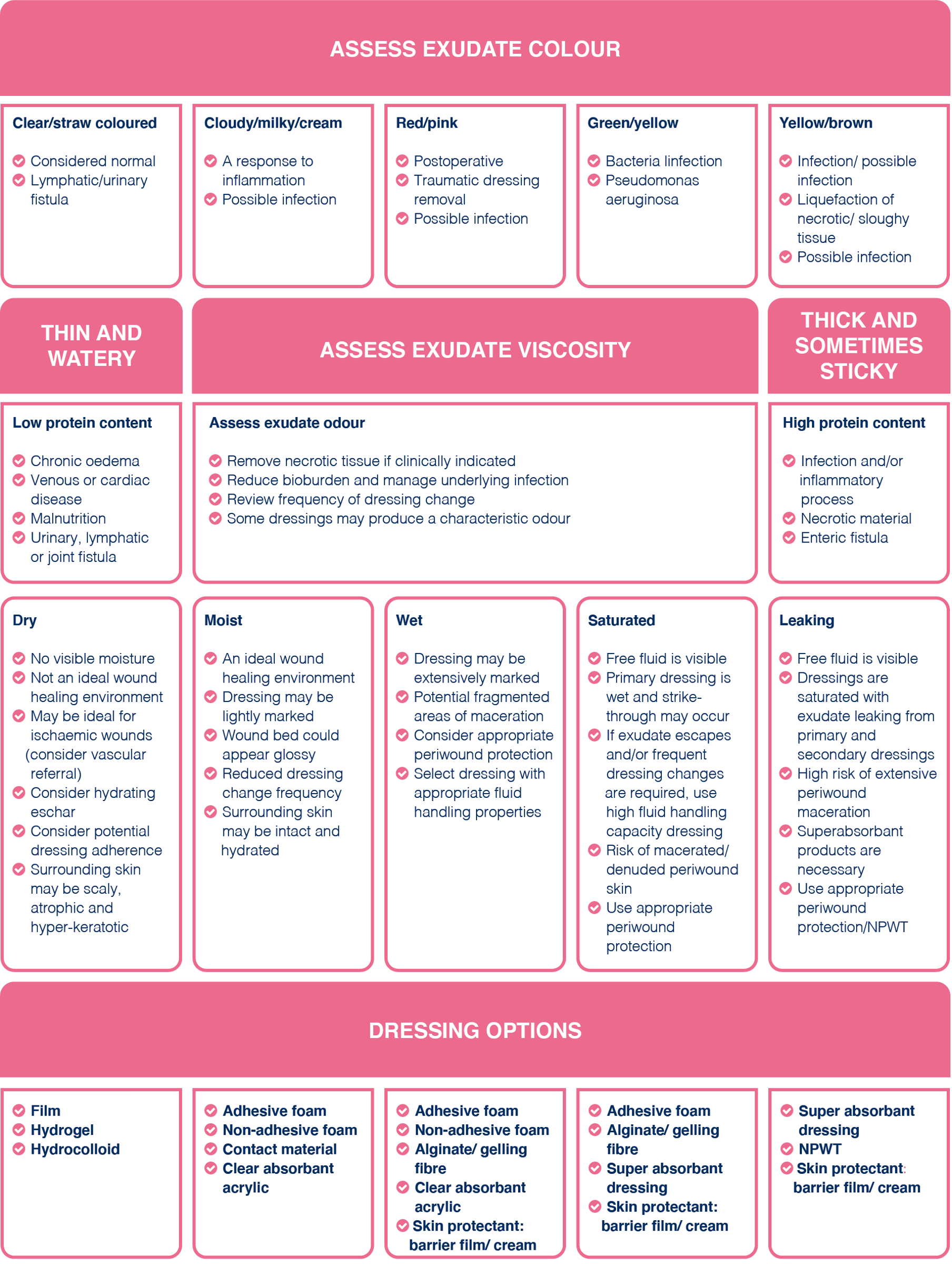Exudate Management with Dressings
In local wound management, dressings are the main option for managing exudate. Following an integrated exudate assessment, the clinician will decide whether there is a need to change or maintain the current dressing regimen.
Strategy for achieving the desired moist wound environment
| AIM | STRATEGY |
|---|---|
| Increase moisture |
|
| Maintain wound moisture |
|
| Reduce wound moisture |
|
There are a vast number of different absorbent dressings, mainly because one of the most difficult tasks in wound management is the containment of exudate (Beldon, 2010). A number of dressing types are suitable for exudate management. These various products handle fluid in different ways. Some simply absorb the fluid at the point of contact with the wound, while others spread it laterally (wicking), making full use of the dressing’s total size.
There are those that rely both on absorbency and evaporation, measured by moisture vapour transmission rate (MVTR), as well as dressings that absorb vertically with a reduced lateral wicking action. Some gel-forming dressings also trap exudate components and microorganisms (WUWHS, 2019).
The main categories of dressing to choose from for exudate management are alginates, Hydrofiber, gelling fibres, super absorbents and foams.
There are several ideals for a dressing when looking at exudate management that should be considered:
- Available in a range of shapes and sizes across care settings
- Easy to apply
- Require a secondary dressing
- Comfortable/reduces pain/does not cause pain on application
- Conformable
- Prevents leakage and strikethrough
- Absorbs odour
- Stays intact and remains in place during wear
- Suitable for extended wear (based on clinical need)
- Suitable fluid-handling capacity relative to the wound exudate level
- Retains fluid-handling capacity under compression therapy or when used with an offloading device
- Atraumatic and retains integrity on removal
- Unlikely to cause sensitisation or to provoke an allergic reaction
- Cosmetically acceptable and available in a range of colours to match the patient’s request
- Does not impede physical activity
- Patient can shower with the dressing in situ
- Incorporates sensors/alerts to feedback on dressing performance, need for change and wound condition
- Inactivates factors that enhance inflammation (Matrix metalloproteases MMPs)
- Cost-effective – considering factors such as the unit cost of dressing versus time taken to change, the potential impact on healing by use of cheaper dressings, how to make the case to procurement
(WUWHS, 2019)

Any alteration in exudate levels and characteristics may indicate a change in wound status and as such wound management should be reassessed as necessary. Adapted from Wounds UK, 2013; WUWHS, 2019